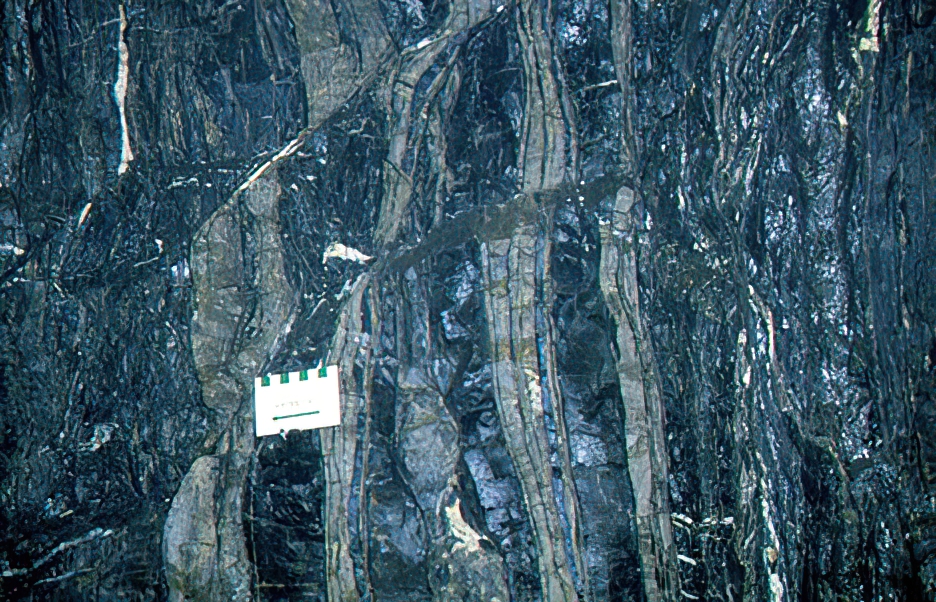Natural Planet Evolution, Extinction and Resources in Geologic Time

Picture courtesy Dr. Jan Peter
By Bruce Downing, M.Sc., PGeo.
Climate change, bio-diversity change, mineral resource formation, species evolution and extinction are natural occurring events that have happened throughout the Earth’s 4.5-billion-year history.
Planet Earth has experienced five mass extinctions that are the result of tectonic – climatic – environmental changes. These changes are the cause or effect of volcanic eruptions, asteroid impacts, earthquakes, fire, floods, tsunamis, tornadoes, glaciation as well as anthropogenic events. The Earth now has to sustain eight billion people who will create, witness and endure these natural and anthropogenic events. Our success depends on adaptation to climate – environmental change. Has this planet begun the path towards a sixth mass extinction? Climate change may not be the sole harbinger of the sixth event.
Planet Earth has undergone plate tectonism forming continents, land masses and resource deposits as we know today. This planet is still undergoing plate dynamics as evidenced by earthquakes, volcanism, erosion and sedimentation.
Advancements in the field of paleontology and genetics have enabled us to reveal the details of past life and decipher climate change and evolution of life over geologic time including periods of rebirth through everlasting cycles. Biodiversity has existed throughout geologic time but which we are more aware of today.
Mineral deposits, coal, oil and natural gas were naturally formed over thousands to millions of years, and they are used to sustain our life as we know it today. These resources are finite and may eventually run out someday.
Carbon dioxide and methane have both led to the natural evolution and extinction of life in the Earth’s past history. Carbon dioxide has been instrumental in forming limestone, a naturally occurring rock used today in agriculture, construction and other products. Carbon dioxide is the basis for oxygen generation needed for the existence of life today. Methane is a natural occurring gas and a naturally generated gas (e.g. cattle). Both gases can lead to a “greenhouse” effect, both in the past and at present.
Climate changes are affected in different ways in different parts of the planet with varying outcomes. The time spans of climate change are important. We are experiencing a rapid climate change today as compared to geologic time. Evolution needs time to adapt, millions of years as compared to our present time of hundreds or even tens of years. The last big mass extinction was 66 million years ago.
This planet has undergone high levels of carbon dioxide in the past and biodiversity existed and survived. There has never been any carbon neutrality throughout the planet’s evolution.
Evolution of mankind has been a natural entity (or progression) from Neanderthals and Denisovans to Homo Sapiens, all of whom have been able to adapt to different environments throughout time on this planet. Mankind has used natural resources to exist since their first emergence.
Charles Darwin’s (natural) theory of evolution as we know it today lends itself to the introduction of new species with the advent of some speciation extinction. So why are we spending time and money on trying to save species extinction when it is really a naturally occurring event as evidenced throughout geologic time? Natural resources are extracted or mined (i.e. depleted on becoming extinct) which are used in products which may be re-cycled.

Matter (or mass) cannot be destroyed but it can be transformed from one state to another. Mankind can be construed as a catalyst for this transformation taking naturally occurring substances and creating new ones. The sum total of naturally occurring elements (periodic table) in the planet remains the same and can neither be formed or destroyed but can be differentiated with their various isotopic forms.
Minerals naturally form and can transform to other mineral forms (evolution) and when mined (depleted) become somewhat “extinct” at that particular location. Minerals can be added to the plant via extra-terrestrial masses (i.e. meteorites). What have you done today that did not involve a mineral? Clearly, mineral resources are natural entities that we need today to sustain life.
As an epilogue to this dissertation, money is being raised and spent in alarming ways with very little rationale, facts, planning and identified end game. The current timeline for limiting climate change to 2030 – 2050 is not within the earth’s natural timeframe of perturbations.
A class on historical geology would be enlightening to journalists, politicians and the public community in general. A good book on this subject is the recent publication by Thomas Halliday “Otherlands”, journeys in Earth’s extinct ecosystems.
A case history to illustrate our natural mineral resource evolution through tectonism and mass extinctions is the story of North America’s largest copper-cobalt deposit, Windy Craggy, located in northwestern British Columbia, Canada. The natural tectonic – climate – environment scenario would be:
- Deposit formed some 230 million years ago over a period of up to several million years. Deposit underwent periods of deformation over geologic time.
- Tectonism could have resulted in deposit never to be discovered as 1) it was completely eroded or 2) it was completely buried. However, with tectonic uplift and erosion through numerous climatic events in geologic time, this deposit was preserved and then exposed to be discovered in 1965. This deposit could provide mankind with the necessary minerals rich in copper, cobalt and additional gold, silver with potential lessor amounts of other metals such as indium, tin, tellurium, bismuth and antimony to produce products that help sustain mankind.
